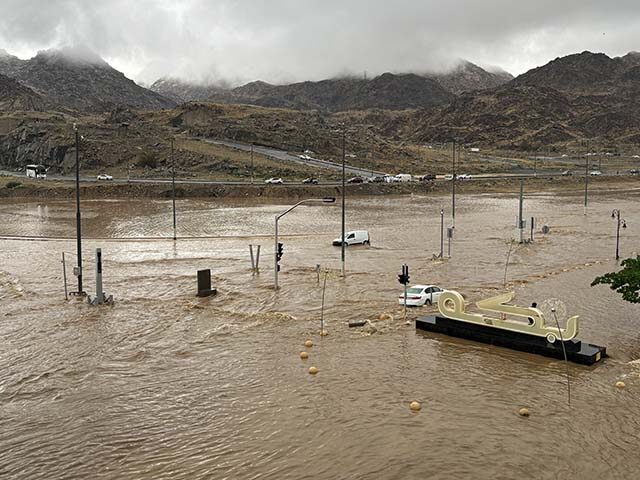The city of Mecca in Saudi Arabia, the holiest city in the Muslim religion, experienced heavy flooding on Monday after torrential downpours.
Videos posted by Saudi citizens and media showed entire neighborhoods submerged, residents forming human chains to rescue children from flooded homes, trees swept away, and vehicles abandoned after stalling in deep water.
Flooding was also reported in Medina, another holy city for Islam, and the major Red Sea port city of Jeddah. Medina actually had the heaviest reported rainfall on Monday with 49.2 mm – a debilitating downpour for a town built in an oasis surrounded by dry hills and lava fields.
India Today described the situation in Mecca as “mayhem,” pushing rescue operations and damage control to their limits.
The National Meteorological Center (NCM) of Saudi Arabia predicted more rain and storms through the week, bringing flood threats to other cities, including the national capital of Riyadh. The NCM issued “red alerts” in several areas, closing public spaces and schools.
The last heavy rainfall in the region killed 21 people in Oman and four in the United Arab Emirates (UAE) in April. The UAE said those storms were the heaviest rainfall it had experienced in 75 years.
Jeddah, one of Saudi Arabia’s worst cities for flood damage, suffered heavy flooding in 2009 that killed over a hundred people.
The UK Daily Mail noted that Saudi Arabia and the other Gulf states tend to see heavy rainfall in the winter, and many of their cities are build on rocky or desert terrain that has trouble absorbing high levels of precipitation, but “many cities have famously underdeveloped drainage and sewage systems.”
Jeddah’s floodwater controls are particularly inadequate to the coastal city’s needs, but complaints by its residents have not been addressed.
The Daily Mail also addressed rumors that excessive cloud-seeding by the UAE might have been partly responsible for excessive rainfall. Regional experts said the rain was too intense to be explained by cloud-seeding, which can increase seasonal rainfall by 30 percent at best.
“The UAE does have an operational cloud seeding program to enhance the rainfall in this arid part of the world. However, there is no technology in existence that can create or even severely modify this kind of rainfall event,” said Maarten Ambaum, professor of atmospheric physics at the University of Reading.

COMMENTS
Please let us know if you're having issues with commenting.